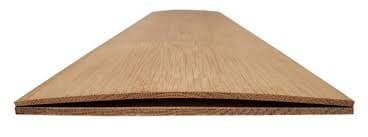Introduction
Plywood is a versatile and widely used material in construction and furniture making due to its strength, durability, and flexibility. However, like any manufactured product, plywood is not immune to defects that can affect its performance and appearance. Recognizing these common defects and knowing how to avoid them can help ensure that you get the best quality plywood for your projects. In this blog, we’ll explore some of the most common plywood defects and offer practical tips for avoiding them.

Plywood is a versatile and widely used material in construction and furniture making due to its strength, durability, and flexibility. However, like any manufactured product, plywood is not immune to defects that can affect its performance and appearance. Recognizing these common defects and knowing how to avoid them can help ensure that you get the best quality plywood for your projects. In this blog, we’ll explore some of the most common plywood defects and offer practical tips for avoiding them.
Common Plywood Defects
Warping
Description: Warping refers to the deformation of plywood, such as bending, twisting, or cupping, which can occur due to uneven drying or moisture exposure.
Causes:
- Uneven moisture content during manufacturing.
- Exposure to high humidity or water.
- Incorrect storage conditions.
Prevention Tips:
- Store plywood in a dry, well-ventilated area away from direct sunlight and moisture.
- Ensure that plywood is acclimated to the environment where it will be used before installation.
- Use proper sealing and finishing techniques to protect the plywood from moisture.
Delamination
Description: Delamination occurs when the layers of plywood start to separate or peel away from each other.
Causes:
- Poor quality adhesive used during manufacturing.
- Exposure to excessive moisture or water.
- Inadequate curing of adhesives.
Prevention Tips:
- Choose plywood from reputable manufacturers known for using high-quality adhesives.
- Ensure proper sealing and finishing to prevent moisture infiltration.
- Avoid using plywood in environments prone to high humidity or direct water contact.
Voids and Gaps
Description: Voids and gaps are empty spaces or holes within the plywood layers, which can weaken the structural integrity of the material.
Causes:
- Inconsistent pressing during manufacturing.
- Presence of defects in the wood used for the core layers.
Prevention Tips:
- Inspect plywood sheets carefully for visible defects before purchase.
- Buy plywood from suppliers that adhere to strict quality control standards.
- Opt for higher-grade plywood with fewer defects and a more uniform core.
Blisters
Description: Blisters are raised areas or bubbles on the surface of the plywood, often caused by trapped air or moisture.
Causes:
- Improper adhesive application.
- Inadequate pressing during manufacturing.
- Exposure to moisture.
Prevention Tips:
- Ensure that plywood is stored and handled correctly to avoid exposure to moisture.
- Check that the adhesive used is appropriate for the type of plywood and application.
- Verify that the plywood manufacturer follows proper pressing and curing procedures.
Discoloration
Description: Discoloration refers to uneven or unwanted color variations on the plywood surface, which can affect its appearance.
Causes:
- Natural variations in wood color.
- Chemical reactions or stains during manufacturing.
- Exposure to sunlight or chemicals.
Prevention Tips:
- Choose plywood with consistent color and grain patterns from reputable sources.
- Use a protective finish to maintain the appearance and prevent discoloration.
- Store plywood in a controlled environment to minimize exposure to sunlight and chemicals.
Splitting
Description: Splitting occurs when the plywood cracks or splits, often at the edges or during cutting.
Causes:
- Poor-quality wood used for the core.
- Incorrect cutting or handling techniques.
- Exposure to extreme temperatures.
Prevention Tips:
- Use proper cutting tools and techniques to avoid stressing the plywood.
- Ensure that plywood is handled with care during transportation and installation.
- Select plywood with a stable core and avoid exposure to extreme temperature changes.
Sanding Marks
Description: Sanding marks are visible scratches or grooves left on the plywood surface from the sanding process.
Causes:
- Inadequate sanding during manufacturing.
- Use of coarse sandpaper.
Prevention Tips:
- Inspect the plywood surface for sanding marks before purchasing.
- Choose plywood from manufacturers known for thorough surface preparation.
- Sand the plywood carefully during your own preparation to achieve a smooth finish.
Dimensional Variations
Description: Dimensional variations refer to inconsistencies in the thickness or width of the plywood sheets.
Causes:
- Manufacturing tolerances.
- Issues during cutting or handling.
Prevention Tips:
- Purchase plywood from manufacturers that adhere to strict dimensional standards.
- Measure and verify the dimensions of plywood sheets before use.
- Use plywood from the same batch for uniformity in projects.
Core Defects
Description: Core defects include issues like knots, cracks, or voids within the plywood’s inner layers.
Causes:
- Poor quality of the core wood.
- Manufacturing defects.
Prevention Tips:
- Inspect the plywood’s core for visible defects before purchase.
- Opt for higher-grade plywood with a well-constructed core.
- Choose suppliers that provide detailed information about the core quality.
Uneven Surface
Description: An uneven surface can include ridges or irregularities that affect the plywood’s usability and finish.
Causes:
- Inconsistent pressure during pressing.
- Variations in wood fiber density.
Prevention Tips:
- Inspect the plywood for surface smoothness and consistency before purchase.
- Select plywood from reputable manufacturers with a focus on surface quality.
- Use appropriate finishing techniques to address minor surface irregularities.
Conclusion
Understanding and identifying common plywood defects is crucial for ensuring that you select the highest quality material for your projects. By being aware of these defects and implementing the preventive measures outlined above, you can avoid many of the issues that can affect plywood performance and appearance. Whether you’re working on furniture, cabinetry, or construction projects, choosing high-quality plywood and following best practices for handling and maintenance will help you achieve the best results and ensure the longevity of your work.






